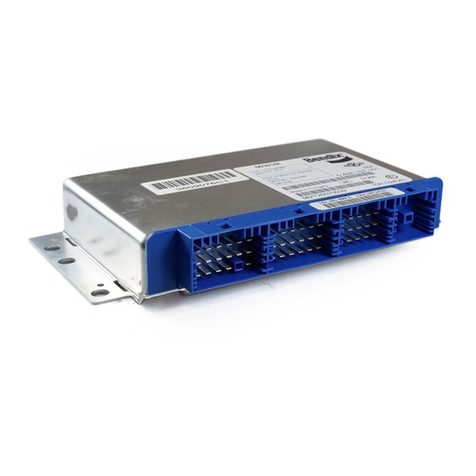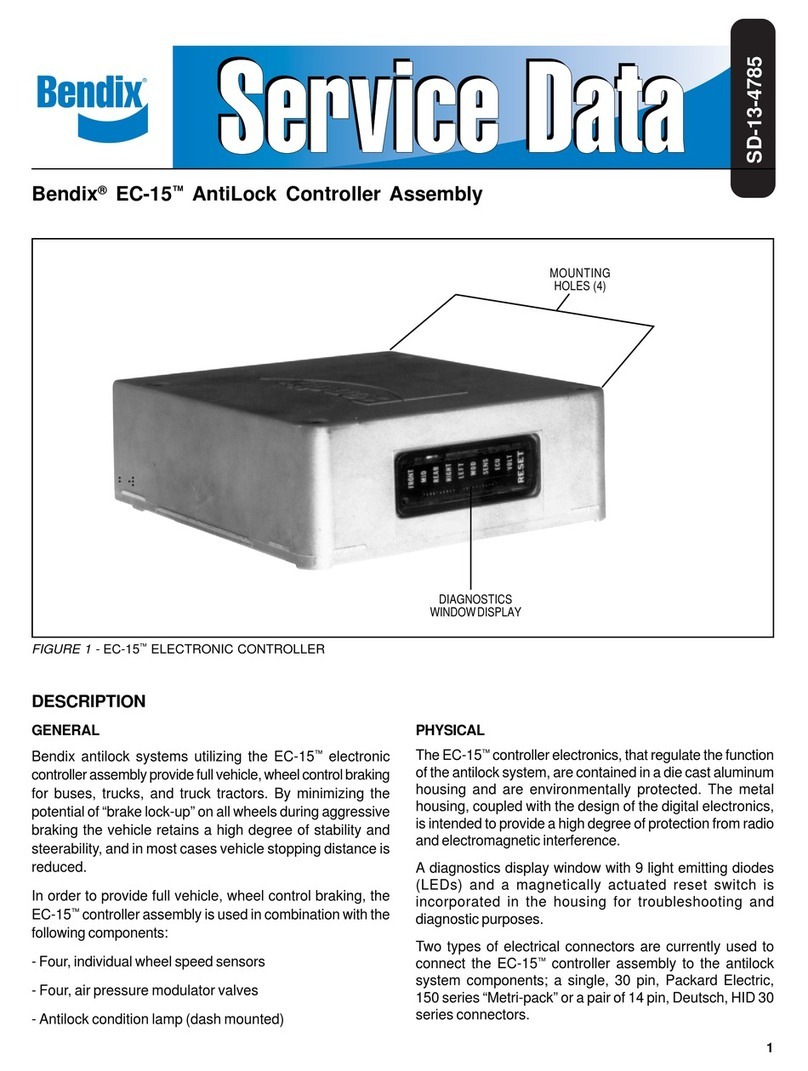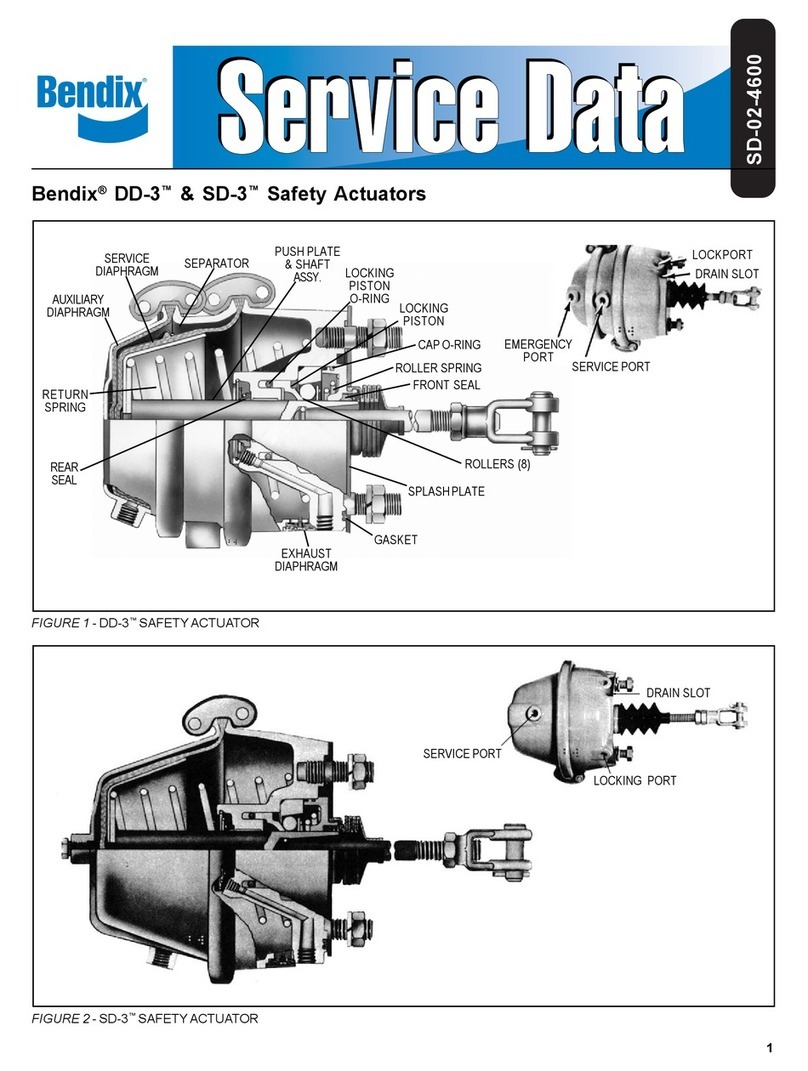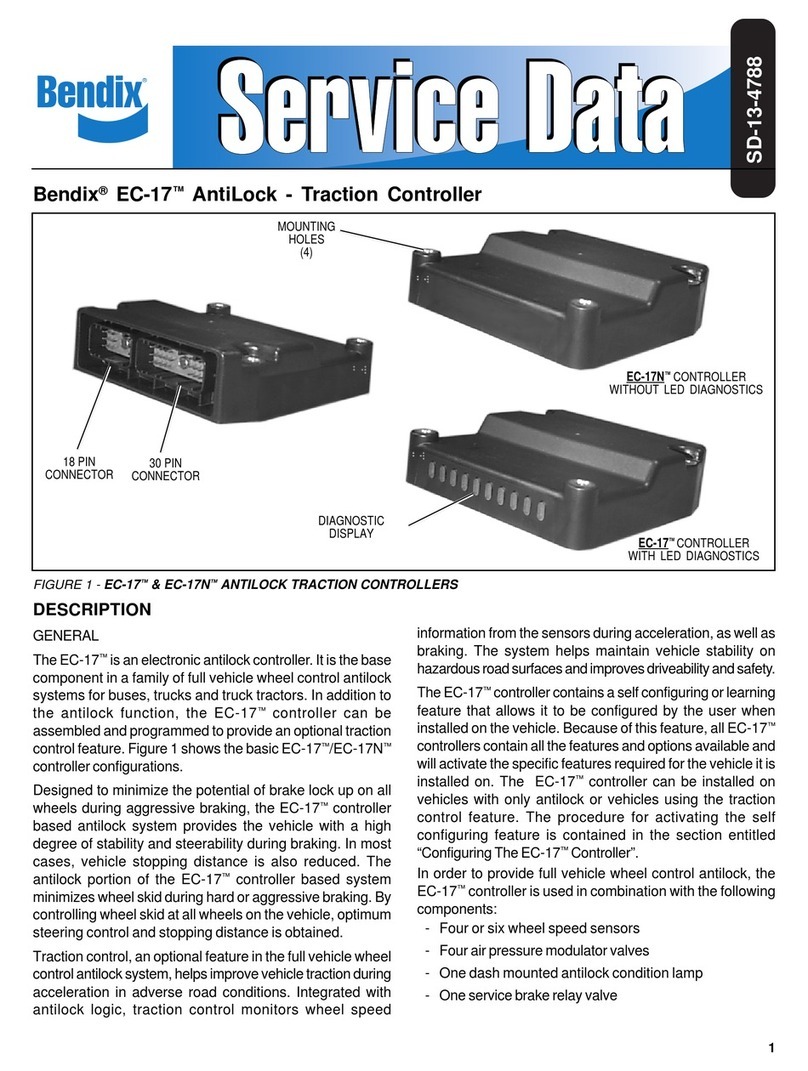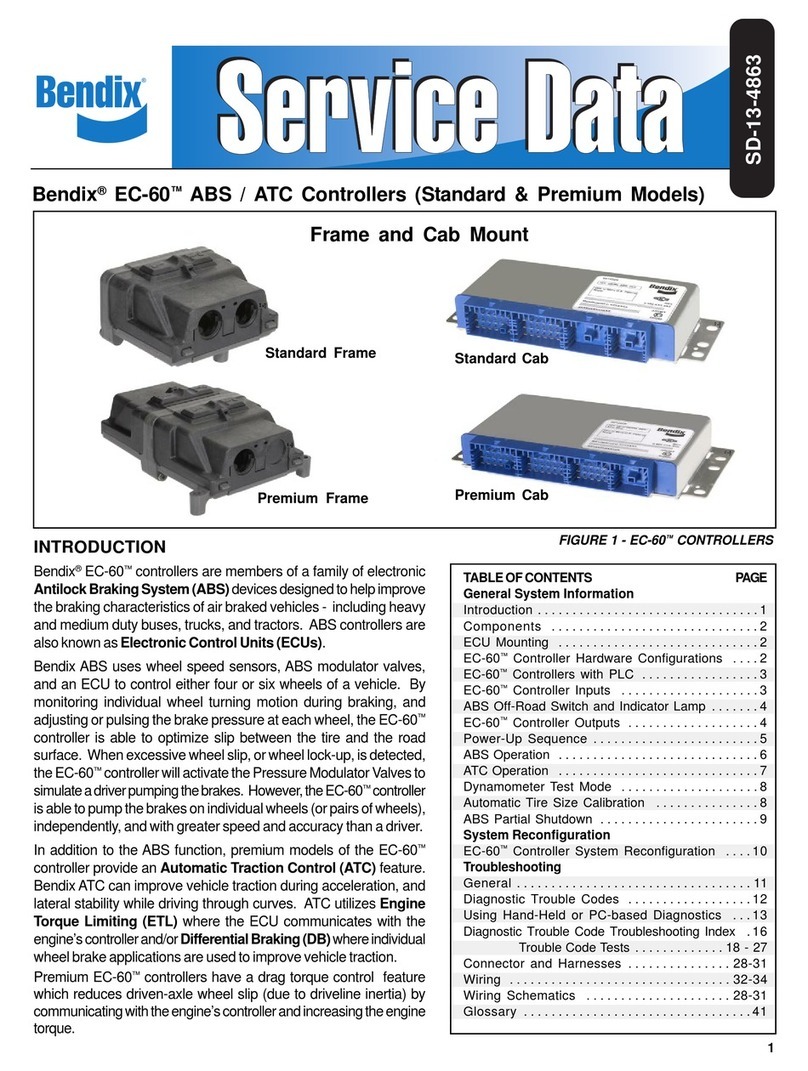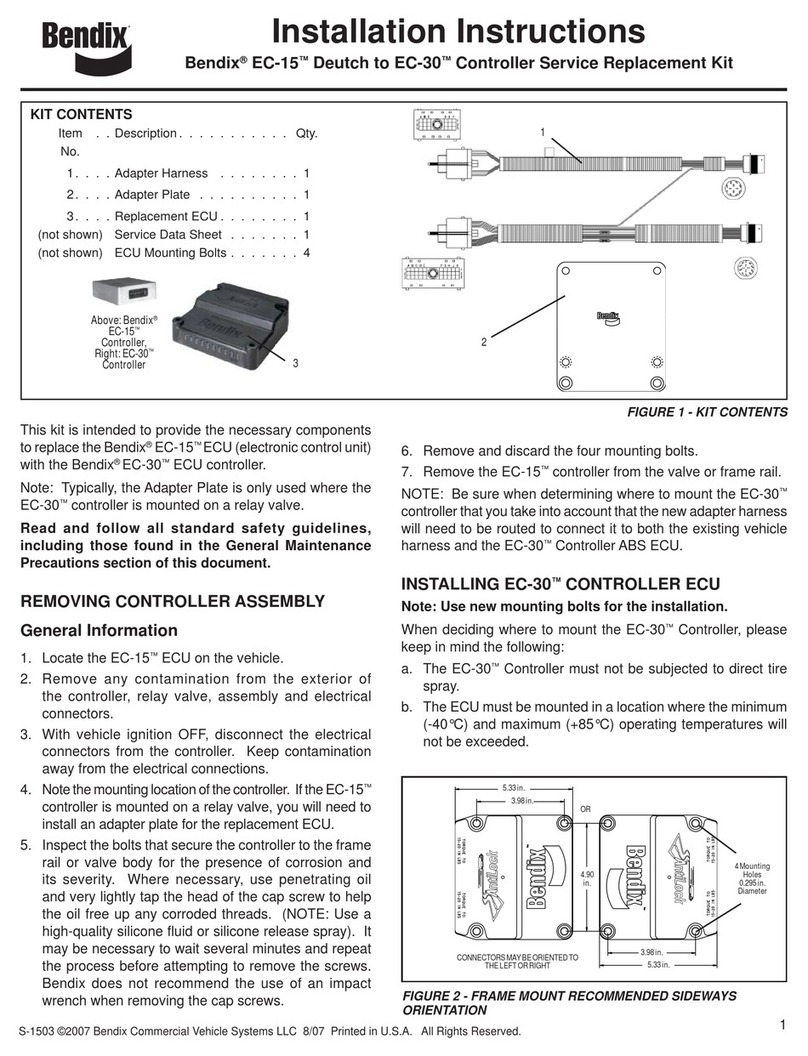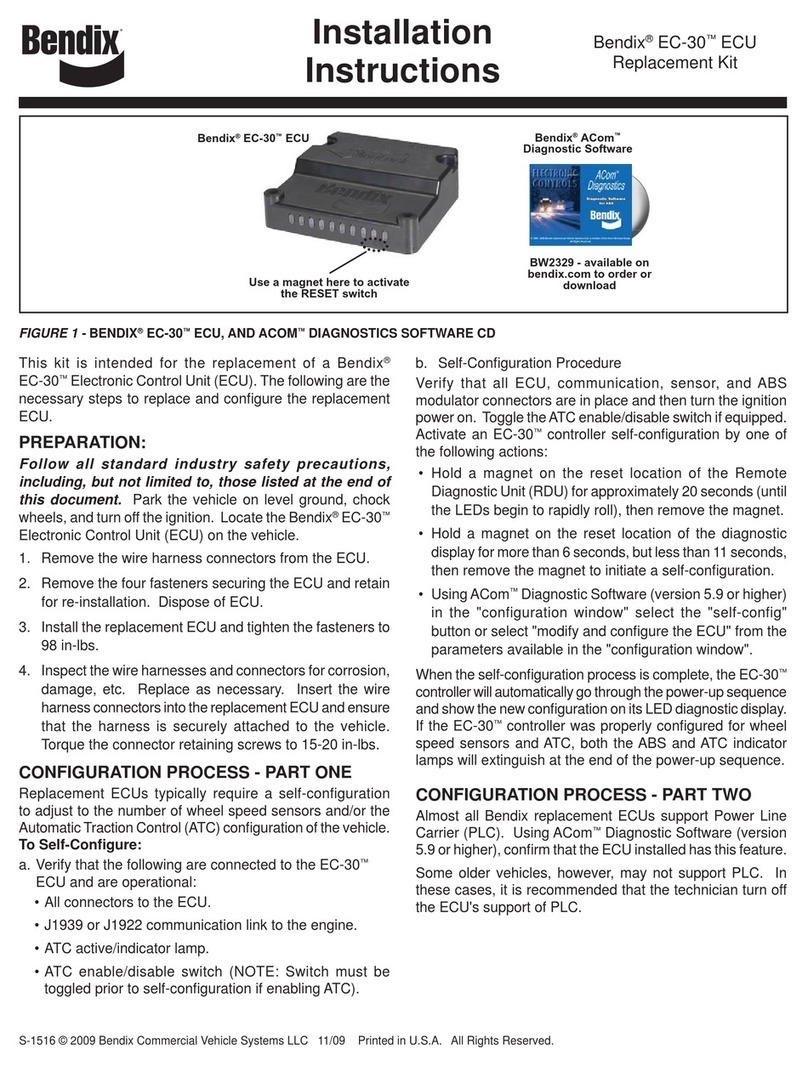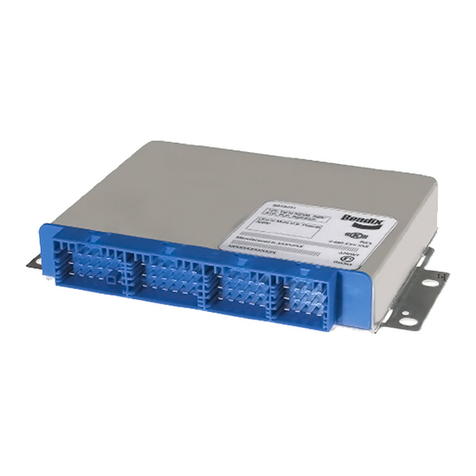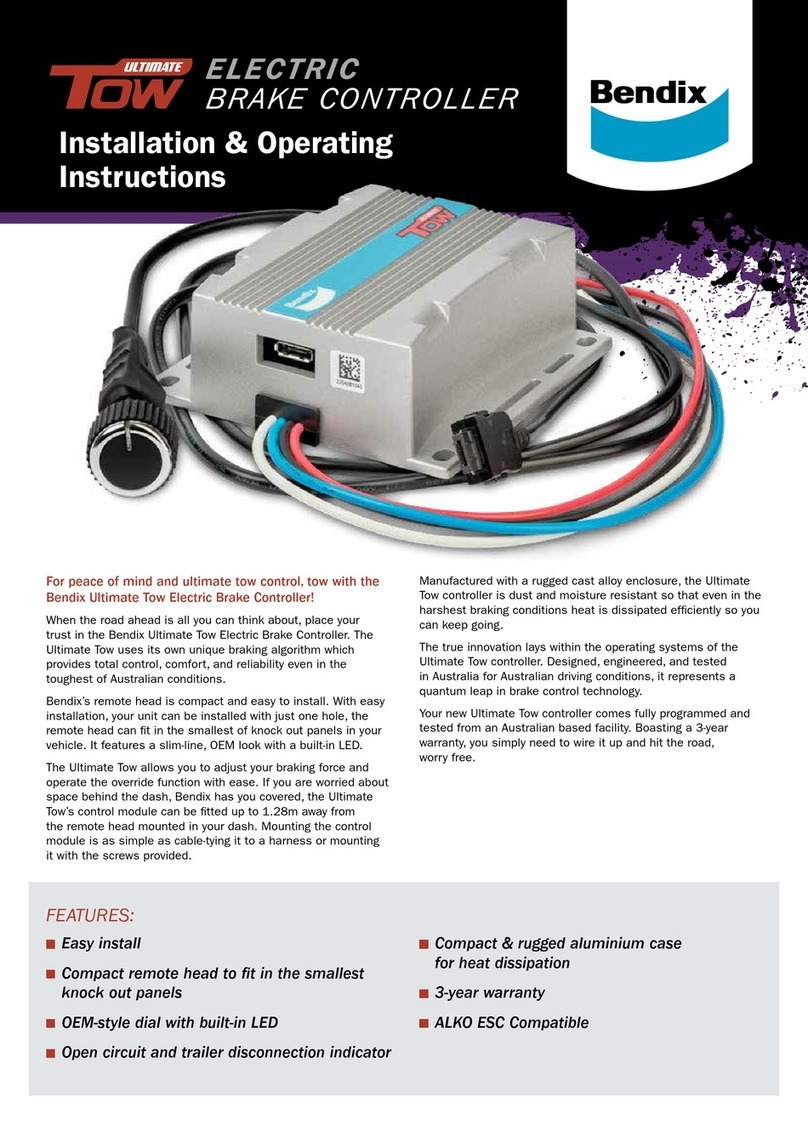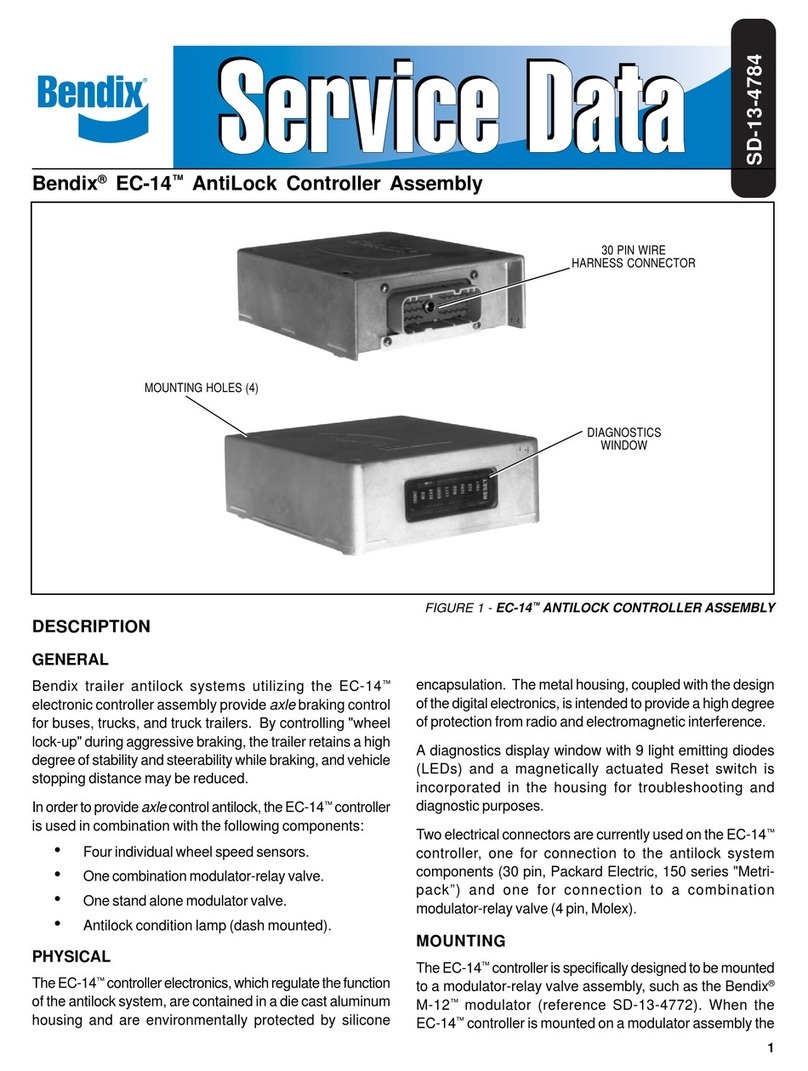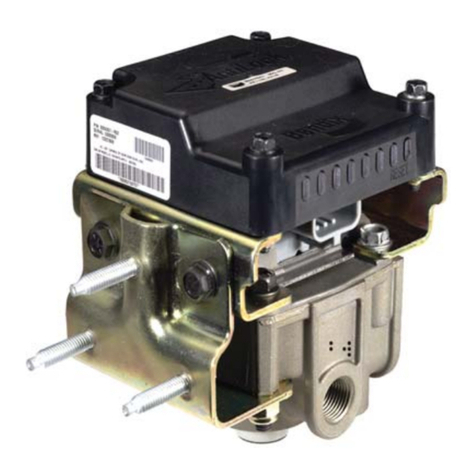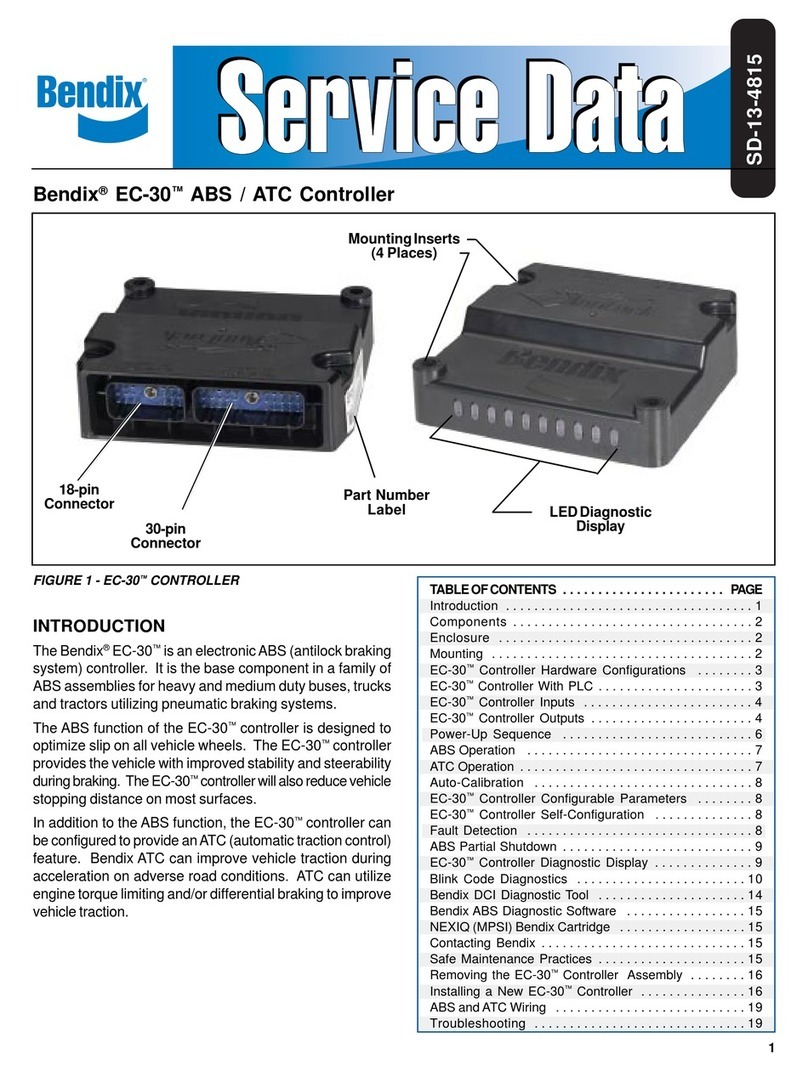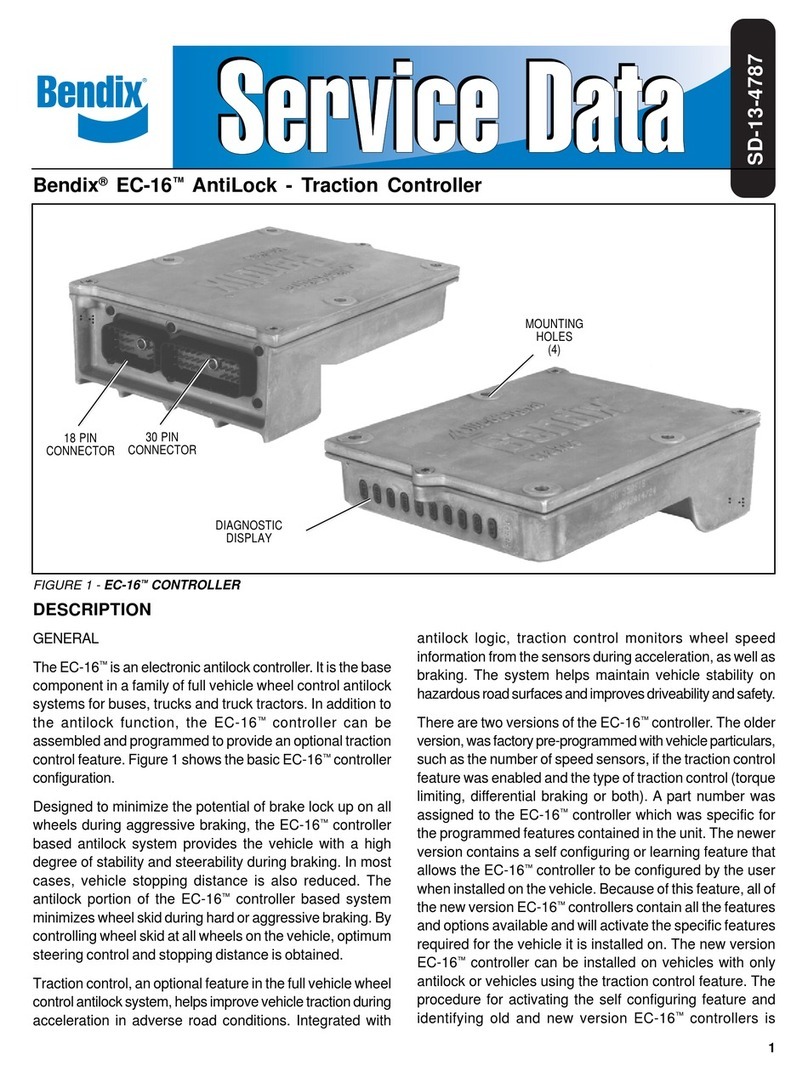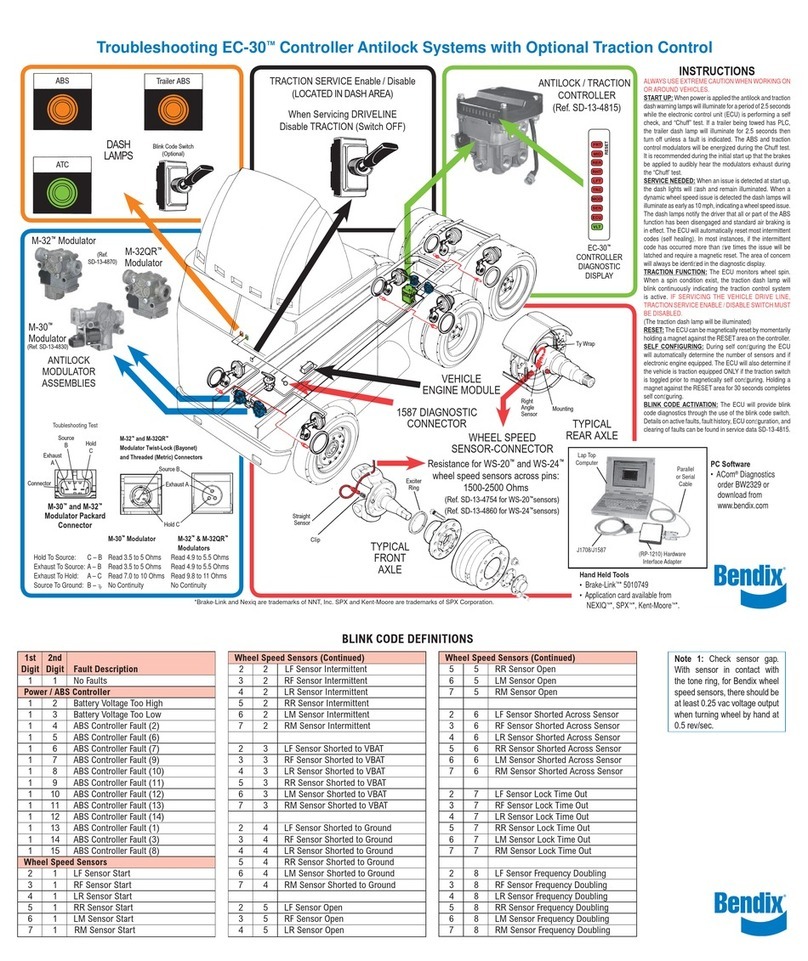
2
OPERATION
Controlled air pressure enters the brake chamber through
theinletportandacts uponthe diaphragmmovingthepush
plate and rod assembly forward.
Whenthebrakechamberisusedtoactuatecamtypebrake
foundationassemblies,theyoke (which is threadedonthe
push rod) is connected to a slack adjuster, which in turn is
connected to the brake cam shaft. This forward motion of
thepushrod rotatestheslack adjuster,camshaft andcam
applyingthevehicle brakes.
Thegreater airpressureadmittedtothebrakechamber,the
greater the force applied by the push rod and conversely,
the less pressure applied to the brake chamber the less
forceappliedby thepush rod.Pushrod forceis determined
by multiplying the delivered air pressure by the effective
diaphragmarea.Forexample,if 60psiisadmittedto atype
30 brake chamber, the lineal force on the end of the push
rod is approximately 1800 lbs.
Whenairpressure isreleasedfrom thebrakechamber,the
push rod return spring in combination with the brake shoe
return spring returns the diaphragm, push plate and rod
assembly, slack adjuster and brake cam to their released
positionsreleasingthe brakes.
PREVENTIVE MAINTENANCE
A. Every Month, 8,000 Miles or 300 Operating Hours,
depending on type of operation
1. Checkpushrod travelandadjust travel attheslack
adjusterifneeded.Pushrodtravelshouldbeasshort
aspossiblewithoutbrakesdragging.Excessivepush
rod travel reduces braking efficiency, shortens
diaphragm life, gives slow braking response and
wastesair.
2. Check push rod to slack adjuster alignment from
release to full stroke position to be sure push rod
moves out and returns properly without binding at
thenon-pressureplateholeor withother structures.
Also check the angle formed by the slack adjuster
armandpushrod.Itshouldbegreaterthan900when
thechamberisinthereleasedpositionand approach
900atmaximumre-adjustment stroke.
3. Checktightness ofmounting nuts.Checkcotterpins
to make sure they are in place.
4. Check all hoses and lines. They should be secure
andingood condition.
B. EveryYearoraftereach100,000Milesor3600Operating
Hours,dependingontypeof operation
1. Disassemble and clean all parts.
2. Install new diaphragm or any other parts if they are
worn or deteriorated. When the diaphragm, spring,
orbothare replaced,theyshould bereplacedin the
correspondingchamberon thesameaxle.
OPERATING AND LEAKAGE TESTS
A. OPERATINGTEST
1. Apply brakes and observe the push rods move out
promptlyandwithout binding.
2. Releasebrakesandobservethatthepushrodsreturn
tothereleasedpositionpromptlyandwithoutbinding.
3. Checkpushrod travel.Push rodtravelshould beas
short as possible without brakes dragging. Adjust
travel of push rod at slack adjuster if necessary.
B. LEAKAGETEST
1. Makeandhold a fullbrakeapplication.
2. Usingsoapsolution,coatclampingring(s).Ifleakage
is detected, tighten clamping ring only enough to
stopleakage.DO NOTOVERTIGHTENas thiscan
distort sealing surface or clamping ring. Coat area
aroundpushrodhole(loosenbootif necessary).No
leakage is permitted. If leakage is detected, the
diaphragmmustbe replaced.
REMOVING AND INSTALLING
A. REMOVING
1. Block vehiclewheels.
2. Release air pressure in all reservoirs.
3. Disconnect line to chamber.
4. Remove theyokepin.
5. Remove thebrake chamber.
CLAMP RING TYPE BRAKE CHAMBER DATA
(Dimensions in Inches)
Max. Max.Stroke
Stroke at Which
Effective * With Brakes
Area Outside Max. Brakes ShouldBe
Type (Sq. In.) Diameter Stroke Adjusted Readjusted
6 6 4-1/2 1-5/8 Should 1-1/4
9 9 5-1/4 1-3/4 be as 1-3/8
12 12 5-11/16 1-3/4 short as 1-3/8
16 16 6-3/8 2-1/4 possible 1-3/4
20 20 6-25/32 2-1/4 without 1-3/4
24 24 7-7/32 2-1/4 brakes 1-3/4
30 30 8-3/32 2-1/2 dragging 2
36 36 * * 2-1/4
*Dimensions listed do not include capscrew head
projectionsforrotochambers and boltprojectionsfor
clamp type brake chambers.
FIGURE 3
